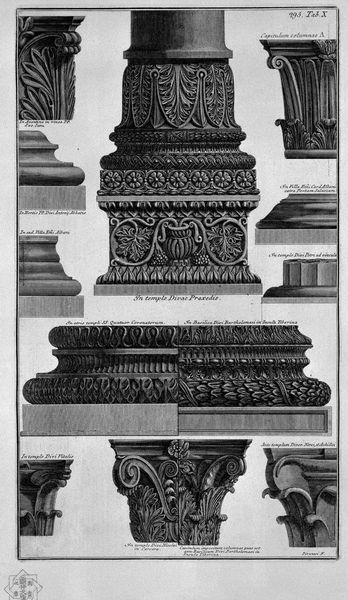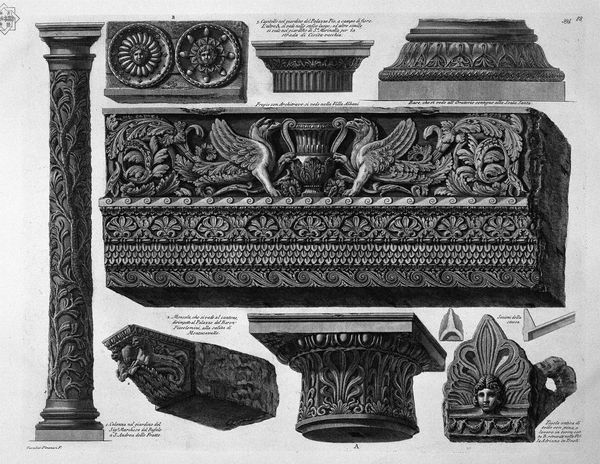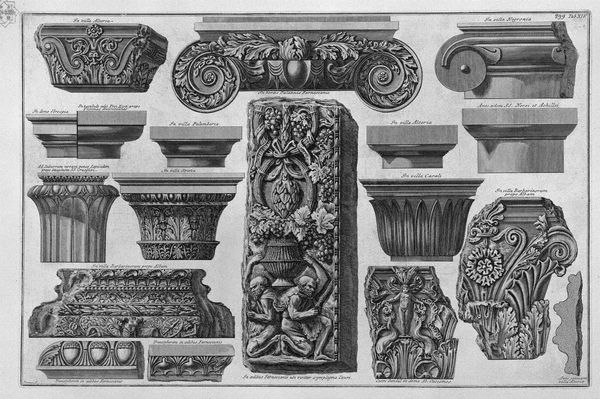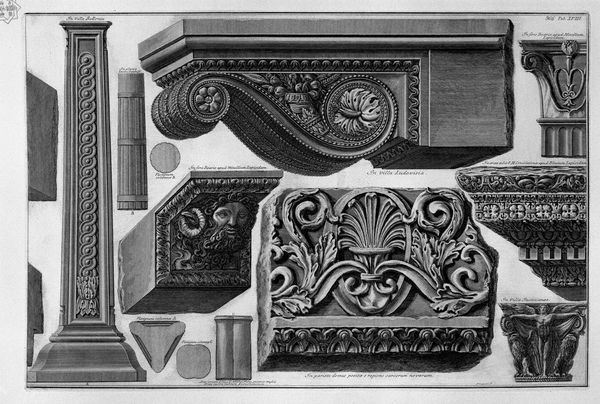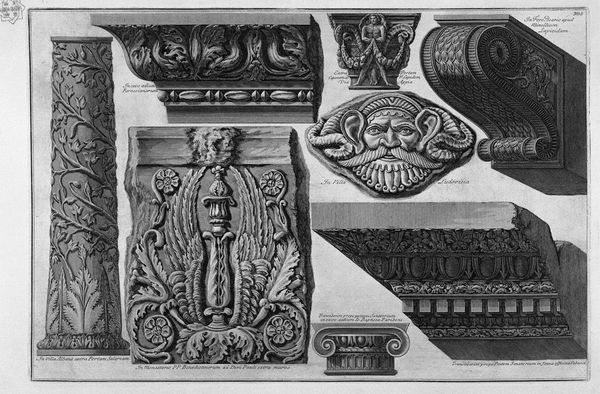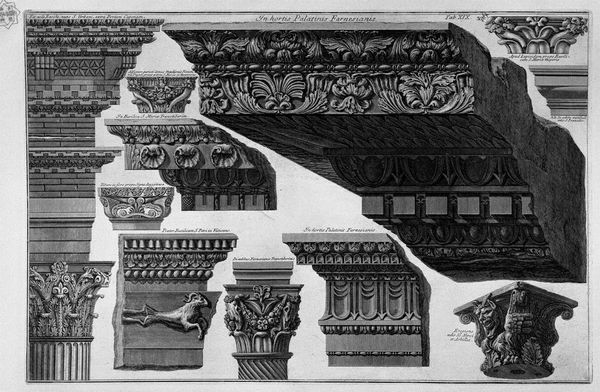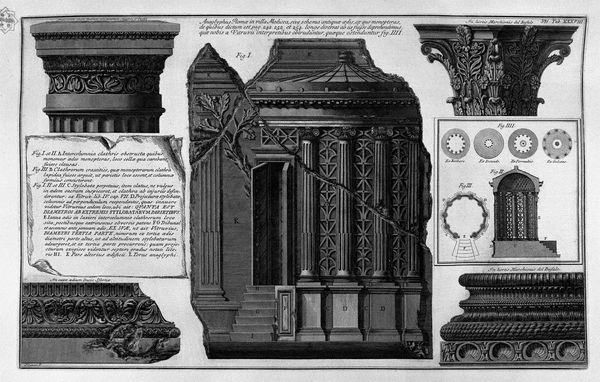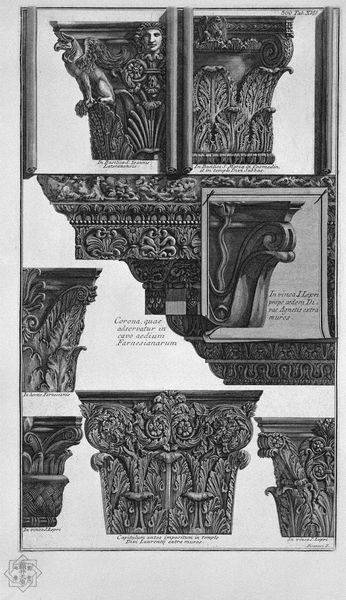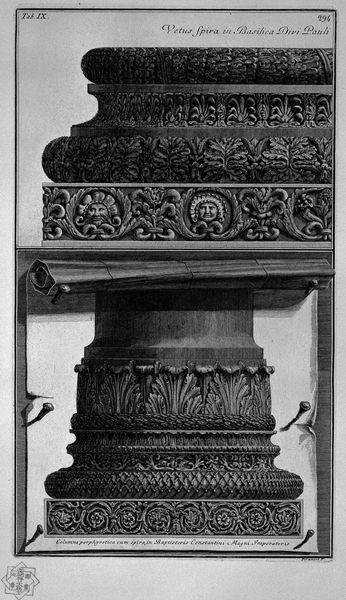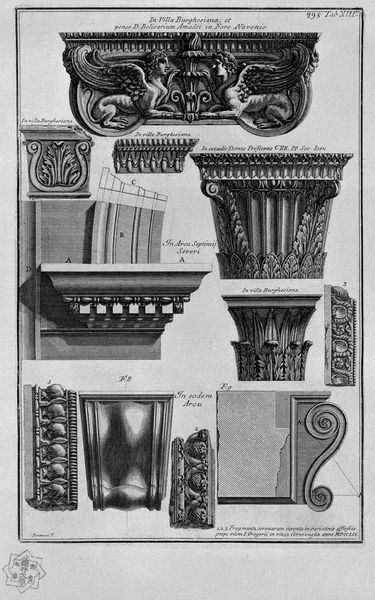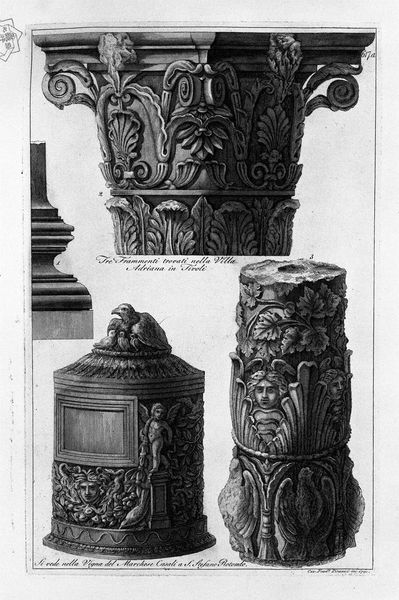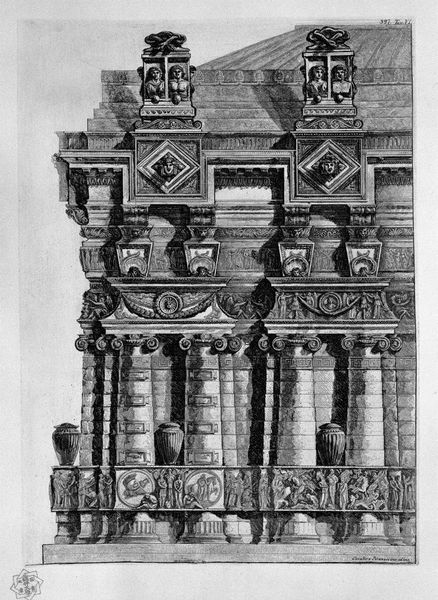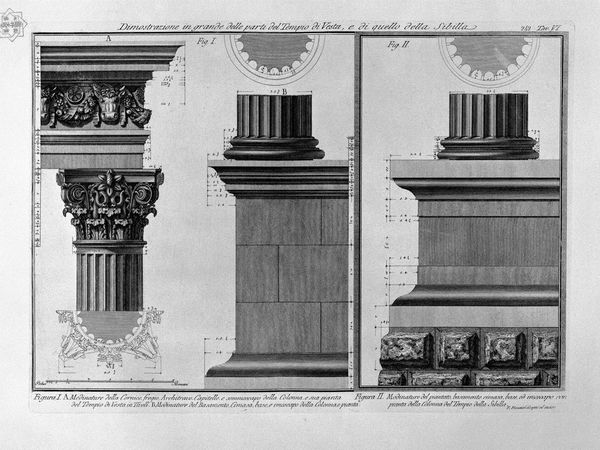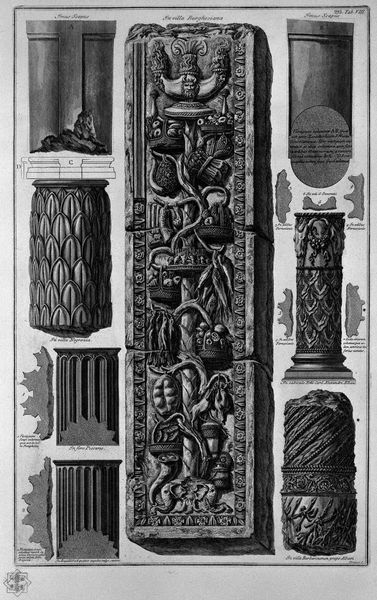
drawing, print, etching, engraving, architecture
#
drawing
#
neoclacissism
# print
#
etching
#
sculpture
#
geometric
#
engraving
#
architecture
Copyright: Public domain
Editor: This print by Giovanni Battista Piranesi, titled "Various bases and a stem of columns," is a really detailed study of architectural fragments. It’s like a catalogue, but with this dramatic, almost romantic feel to it. The textures look incredible. How would you interpret Piranesi's presentation here? Curator: I see it as an act of preservation through documentation, reflecting a broader Enlightenment-era interest in classifying and understanding the classical past, but also it speaks to the sociopolitical climate of the time. Etchings like these were critical to disseminating knowledge about Roman antiquity, not just to architects and scholars, but to a wider public. Editor: So, it’s a kind of democratisation of knowledge? But who controlled that process, and who had access to it? Curator: Exactly. Consider the role of institutions. Who commissioned, collected, and disseminated these prints? The art market played a vital role, certainly. The Grand Tour fuelled the demand for these prints. Northern European aristocrats traveled to Rome. Prints like these would function as a tangible reminder of their time in Rome. Simultaneously, this imagery reinforces certain ideas about classical civilization and Rome's role as an origin point of European cultural dominance, and these notions get circulated amongst the aristocratic elite. The style also became synonymous with power. How do you think these prints affected architectural styles in Europe and America at the time? Editor: I can see how these images could shape taste, influencing building design to reflect that grand, Roman aesthetic. It's more than just architectural documentation, then. It’s about power, taste, and shaping cultural identity through visual representation. I hadn’t considered all these layers before. Curator: Indeed. The act of seeing and interpreting, it is never a politically neutral one, and is inextricably linked to both individual identity and collective power structures.
Comments
No comments
Be the first to comment and join the conversation on the ultimate creative platform.
